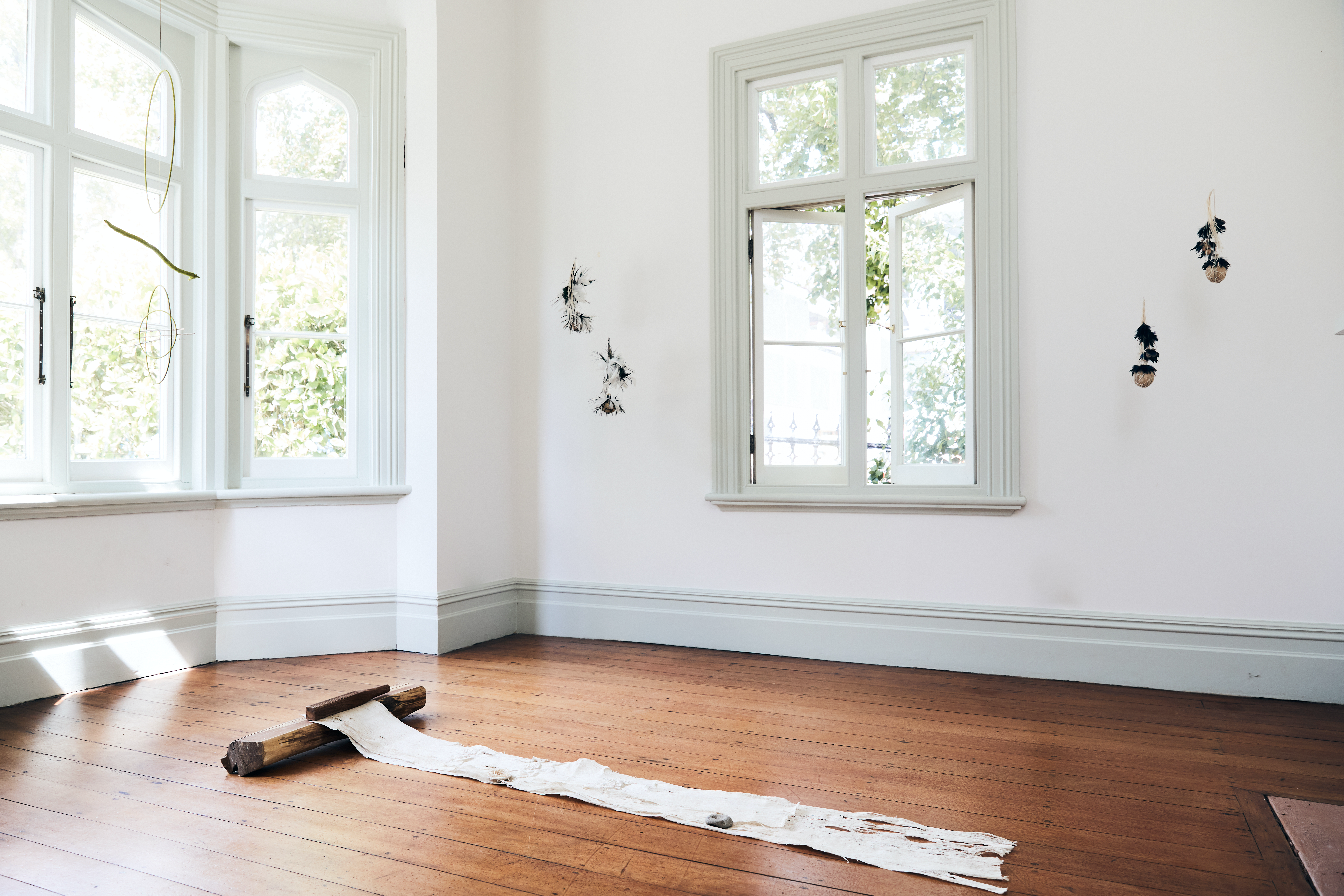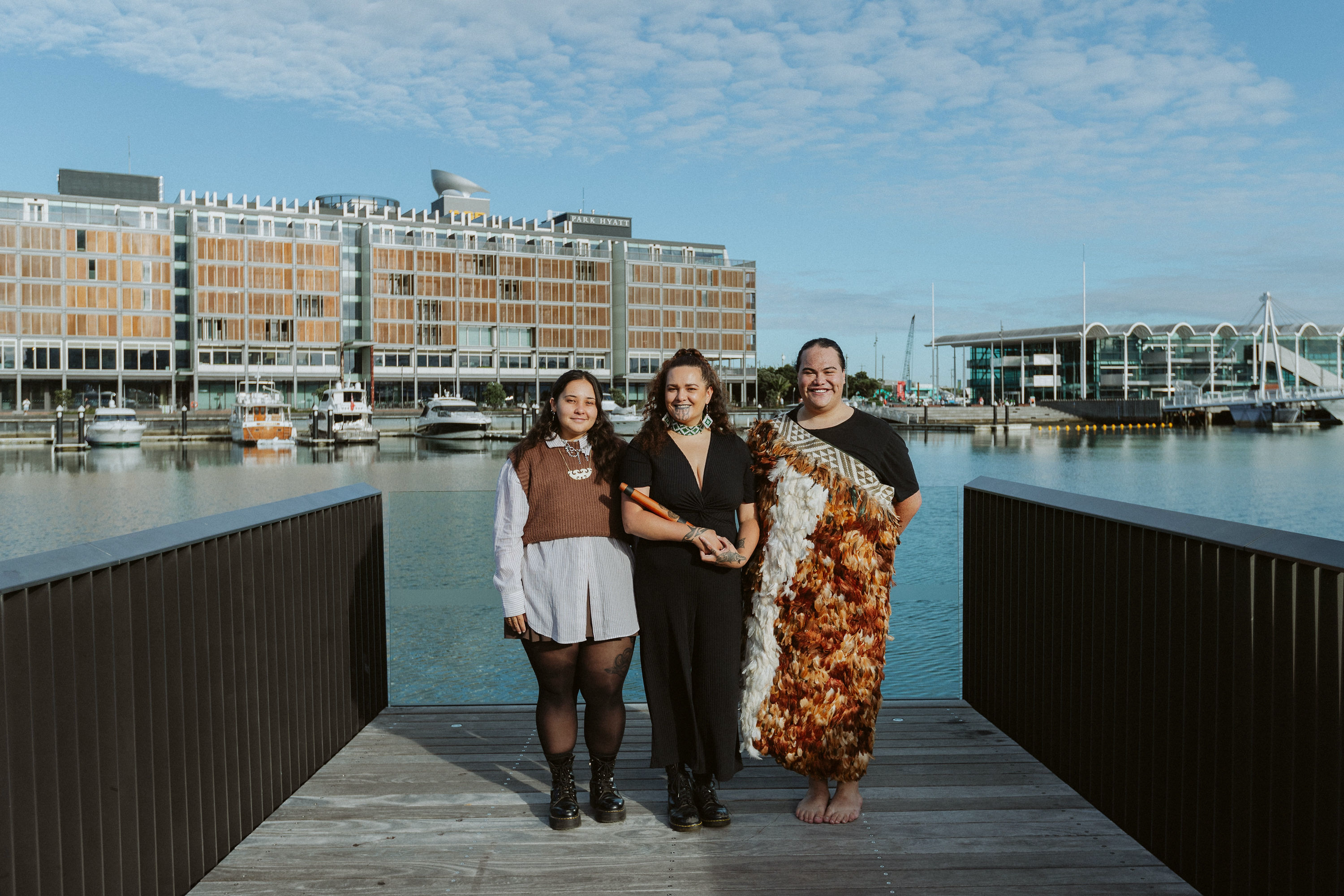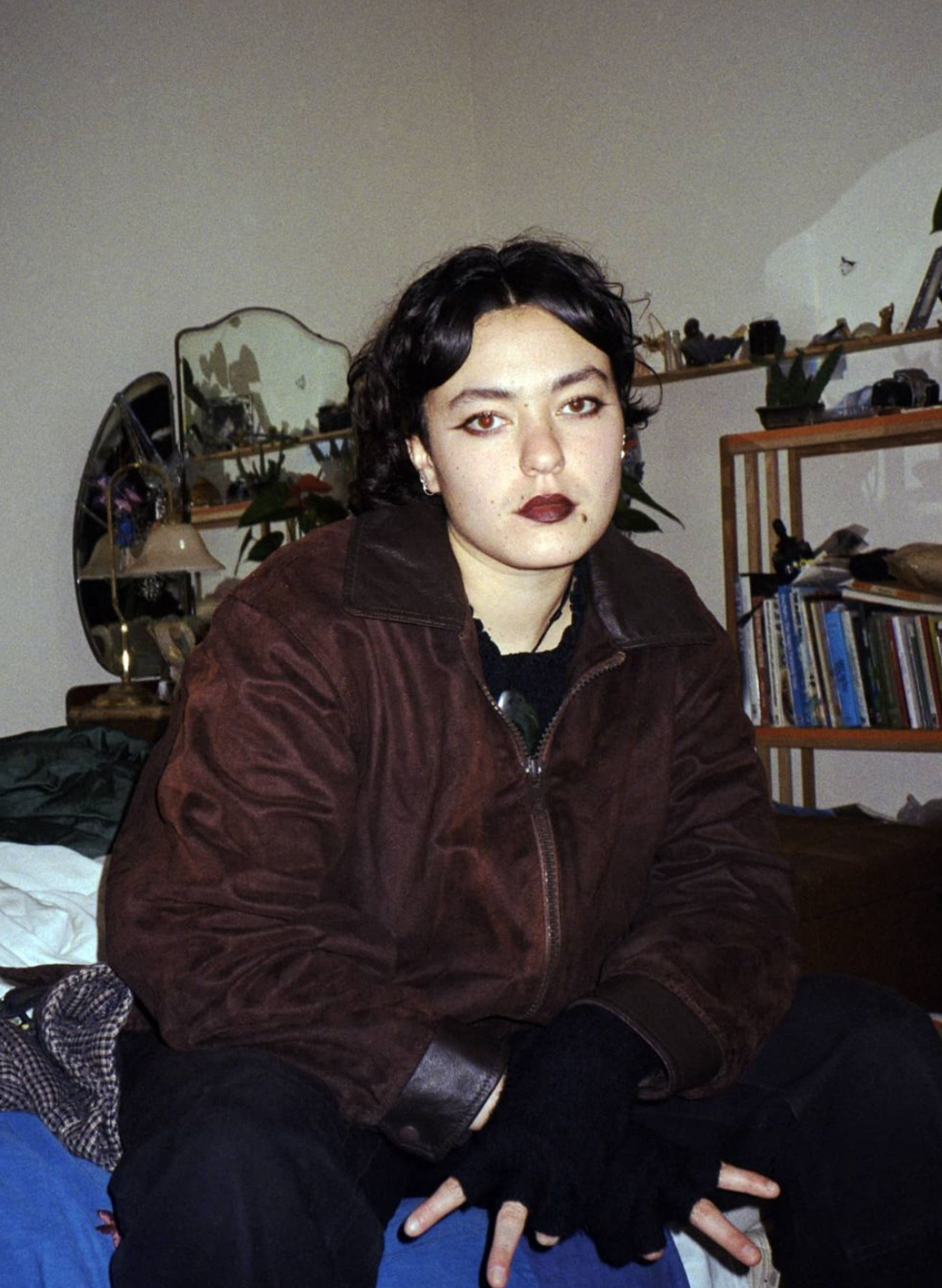Te Tīmatanga
Whiro Walker takes us on a journey to three events they visited as part of Te Tīmatanga, Auckland Pride’s first ever Takatāpui Festival.
Tuwheratanga
On Saturday 4 February, I had the privilege to attend Tuwheratanga, the opening event of Te Tīmatanga at the Albert Park Caretaker’s Cottage. Te Tīmatanga acted as a manawa for toi Takatāpui during Tāmaki Makaurau Pride Month. This was the second year an exhibition was held in the Caretaker’s Cottage for Auckland Pride and the first year it was open for the public to visit. After the hectic week of the flooding I was excited to get out of the house, hang out in the community and look at some beautiful Takatāpui art.
The morning of the opening was a warm haze, Hinepūkohurangi, the atua of mist, was hanging around Albert Park and inviting me in. The Caretaker’s Cottage sits at the edge of the park and was built in 1882, a Victorian timber bay villa with conservation work done in 2018, and is currently leased as a community space. We were welcomed into the whare by Hāmiora Bailey, the curator of the exhibition. Earlier in the week, mana whenua performed a mihi whakatau to open and lift the tapu from the space. Together, as a rōpū, we took our shoes off before entering the whare and quietly entered in a line snaking around the exhibition with our feet gliding over the polished wooden floors.
The whare itself was beautiful, with clean paintwork. Walking through, I felt a little jealous and wished that I could live in a whare this nice. It reminded me of all the shitty disintegrating colonial villas that I’ve rented from cheap landlords. Home but a fancy NOT home. Walking over the threshold and down the hallway, my first impression was that it smelled great. On the window of the first room was a stunning charcoal drawing by Te Rima Whakatau that could be seen from both inside and outside the whare. Sarah Hudson’s work, a beautiful ten-minute video featuring herself, rocks, flame and mud, was projected onto a wall. In the video, Sarah covers herself in clay and then washes it off, embodying Papatūānuku and Hineahuone. Aroha Abigail Jensen’s Taura was suspended from the ceiling, casting a shadow on Sarah’s video. This room was body, it was tactile and left a mark when pressed, seen from inside and out. Moko, charcoal, rope and clay.
The second room embraced the natural light streaming through the bay windows in the villa. The soft lighting complemented the artists’ intricate work and highlighted the tangibility of traditional techniques and natural materials that were used in this room. Each piece appeared to represent a part of te taiao, creating a strong sense of grounding in the wharenui. Louie Zalk-Neale’s work hung over the fireplace, created with material from the moana as an embodiment of Tangaroa. Isaac Te Awa’s poi raupo, titled I Like Balls, intricately woven with peacock feathers, occupied each corner of the room, acting as pou whenua. Atarangi Anderson’s aute in the centre of the whare explored this plant material and hei tiki.
While I didn’t catch the artist in residence’s work, due to the flooding, it gave me a good excuse to go back. The final room held Te Ariki Alistair’s fluffy objects and painted works – cheeky and playful. One of the paintings depicted the Auckland Museum getting sucked into a black hole, or consumed by Te Kore. Tyrone Te Waa’s felted works revealed snapshots of his life and material process. In the final room of the whare, two AIDS quilts hung on the wall; these are an important part of our history and remembrance of those who have lost their lives to AIDS in Aotearoa. Sharing the space in the room was the Art Chemist, which ran every weekend and was an opportunity for people to get an art prescription – a fun consultation that acted as a therapy session and an art directory where you could get a personalised prescription for what Pride events to visit.
Hāmiora Bailey’s curator’s talk was insightful in communicating the ideas that brought this show together. The whare was full of art and life, and a great place to hang out in the heart of the city.
Kauae Raro
After Tuwheratanga, I tailgated to a fantastic making workshop hosted by the collective Kauae Raro with Sarah Hudson and Kahu Kutia. Held in the rotunda a few metres away from the Caretaker’s Cottage, the workshop involved turning whenua into paint. I had such a fun time experimenting with whenua in a very warm, welcoming environment. Sitting in the rotunda, with the breeze, we felt like we were in a bubble and the park was ours alone. It was cathartic to play with mud and use my hands to transfer whenua onto fabric. I have a collection of whenua that I had been too shy to use, but I couldn’t wait to play and transform it into paint as soon as I got home. At the end of the workshop Whaea Robyn and her crew treated us to a boil-up, and it was a special way to end the morning’s activities, sharing kai and getting to know one another.
Kanikani till u gotta get a kebab
After having a rest, my mates and I strapped on our boots and eyeliner and headed out to East Street, where superstar icon Lady Shaka was throwing a Waitangi DJ show called Hoki Whenua Mai. In a sick line-up of Māori DJs, we danced until we couldn’t anymore and it felt awesome to sing waiata and kanikani to Māori tracks, be around each other and have a laugh.
Being Takatāpui is fluid. We are shapeshifters, goblins and taniwha. I feel so lucky and overwhelmed to be part of a community that throws fantastic events that are inclusive and welcoming.



